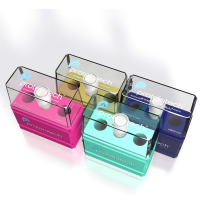The food industry is constantly seeking novel ingredients to improve existing products or to allow the introduction of new products. Such new materials must be safe, pure, and inexpensive, otherwise they will be unacceptable in concept. They must also have organoleptic and textural properties that make them acceptable to the consumer. Sucrose is an extremely valuable food ingredient: its best-known property is its sweetness but, compared with the “high intensity” sweeteners such as Aspartame� and saccharin, sucrose is not a very sweet material. In many cases the amount of sucrose required to provide the degree of sweetness required also provides significant bulk and texture to the product. Often, as in the cases of, for example, chocolate, cakes, and biscuits, consumers expect the bulk and texture provided by the sucrose. Public taste is changing, however, and the level of sweetness provided by the quantities of sucrose needed to give the desired bulk and texture are now excessive, at least to the tastes of many adults. Consequently there is a demand for ingredients that provide bulk and the correct texture to foodstuffs but less sweetness than sucrose. Several disaccharides provide lower levels of sweetness than sucrose and provide similar bulking properties but few of them have the appropriate textural properties. Isomaltulose is about one-third as sweet as sucrose but has a similar sweetness profile to that of sucrose.






